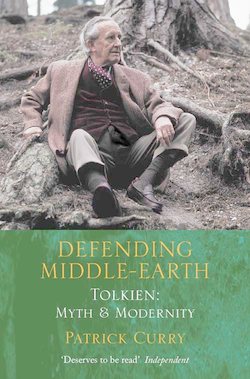Читать книгу Defending Middle-earth: Tolkien: Myth and Modernity - Patrick Curry - Страница 14
Englishness
ОглавлениеNow it doesn’t take any great perceptiveness to see in ‘these charming, absurd, helpless’ (and not-so-helpless) hobbits a self-portrait of the English, something which Tolkien admitted: ‘“The Shire” is based on rural England and not any other country in the world,’ and more specifically the West Midlands: Hobbiton ‘is in fact more or less a Warwickshire village of about the period of the Diamond Jubilee’ (i.e. 1897).
Compare the portrait by George Orwell writing in 1940, and one still instantly recognizable, albeit sadly altered in some respects, of a conservative people neither artistically nor intellectually inclined, though with ‘a certain power of acting without thought;’ taciturn, preferring tacit understandings to formal explication; endowed with a love of flowers and animals, valuing privateness and the liberty of the individual, and respecting constitutionalism and legality; not puritanical and without definite religious belief, but strangely gentle (and this has changed most, especially during the 1980s), with a hatred of war and militarism that coexists with a strong unconscious patriotism. Orwell summed up English society as ‘a strange mixture of reality and illusion, democracy and privilege, humbug and decency.’
True, these attributes are inextricably mingled with ones that the English have wanted to find in the mirror; nor are they eternal and immutable. Because this image partakes of a national pastoral fantasy, however, it does not follow that it has no reality. A social or literary criticism that is afraid to admit the relative truth of clichés and stereotypes is hamstrung from the start. Also, it is worth noting that Tolkien’s portrait is not altogether a flattering one; it includes greed, small-minded parochialism and philistinism, at least – even if Frodo, Sam and the other hobbits of his story were able to rise above these regrettable characteristics of the English bourgeoisie.
However, although Tolkien drew on the tiny corner of the world that is the West Midlands of England, readers from virtually everywhere else in the world connect the hobbits with a rustic people of their own, relatively untouched by modernity – if not still actually existing, then from the alternative reality of folk– and fairy-tale. Doubtless this has been made possible by setting his books in a place that, while it feels like N.W. Europe, is made strange and wonderful by its imaginary time. Otherwise, I have no doubt, they would have suffered from the same limitations of time and place as Kipling’s Puck of Pook’s Hill and G. K. Chesterton’s poems, however wonderful these otherwise may be. Tolkien’s tale, in contrast, has probably achieved as close to universality as is given to art.
